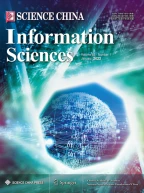Abstract
In global navigation satellite systems (GNSS), because of the long period and high chip rate of long pseudo-noise (PN) code, the rapid acquisition is hard to accomplish. To speed up search process, in the paper, a mapping and overlapping based carrier frequency searching technique is proposed. By mapping incoming signals of the same interval to different carrier frequency cells and overlapping together the mapped incoming signals that correspond to the same code phase, the technique reduces the number of the cells to be searched. The effect of the technique on detection and mean acquisition time performance is analyzed. It is shown that the technique reduces the cells to be searched and shortens mean acquisition time at the expense of degrading detection performance. The technique is fit to the previously published acquisition methods and is capable of improving their mean acquisition time performance. Numerical and simulation results validate the analysis.
Similar content being viewed by others
References
Wang J, Chen J. Performance of wideband CDMA systems with complex spreading and imperfect channel estimation. IEEE J Selected Areas Commun, 2001, 19: 152–163
Kaplan E D, Hegarty C J (ed.). Understanding GPS: Principles and Applications. Norwood: Artech House Publishers, 2006
Lin D M, Tsui J B Y. Acquisition through circular correlation by partition for GPS C/A code and P(Y) code. US Patent, 6 567 042, 2003-5
Lin D M, Tsui J B Y. Comparison of acquisition methods for software GPS receiver. In: Proceedings of ION GPS, Salt Lake, USA, 2000. 2385–2390
Jovancevic A, Ganguly S, Sirpatil B, et al. Real-time software based block processing M-code receiver. In: Proceedings of ION GNSS, Fort Worth, USA, 2007. 142–151
Yang C, Chaffee J, Abel J, et al. Extended replica folding for direct acquisition of GPS P-code and its performance analysis. In: Proceedings of ION GPS, Salt Lake, USA, 2000. 2070–2078
Li H, Cui X W, Lu M Q, et al. Dual-folding based rapid search method for long PN-code acquisition. IEEE Trans Wirel Commun, 2008, 7: 5286–5296
Pang J. Direct global positioning system P-code acquisition field programmable gate arrary prototyping. Disseration for the Doctoral Degree, USA: Ohio University, 2003
Li H, Lu M Q, Feng Z M. Mathematical modelling and performance analysis for average-based rapid search method for direct global position system precicision code acquisition. IET Radar Sonar Navig, 2009, 3: 81–92
Huang Y, Wang J. Two-stage acquisition in time-hopping impluse radio systems for UWB communications. IEEE Trans Wirel Commun, 2007, 6: 3578–3588
Li J, Liu F, Long T. Direct acquisition of GPS P-code under lower-SNR (in Chinese). Trans Beijing Inst Tech, 2009, 29: 68–72
Wang N, Zhang B N, Zhang G M. Direct acquisition technique for GPS P(Y)-code. In: Proceedings of International Conference on Wireless Comunications, Networking and Mobile Computing (Wicom), Shanghai, China, 2007. 2985–2987
Meng W X, Wang W J, Ye Z. Improved algorithm for direct GPS signal P-code acquisition based on frequency domain search (in Chinese). J Harbin Inst Tech, 2007, 39: 733–736
Zhang L, Chu H B, Zhang N T. Research on fast direct acquisition method of satellite navigation signal (in Chinese). J Commun, 2007, 28: 120–124
Tian M H, Feng Y X, Pan C S. Research of a method of direct acquisition based on P code in frequency domain (in Chinese). Acta Electr Sin, 2007, 35: 549–552
Wang H, Yi D J, Wang F X, et al. On the scheme of delay-waiting direct rapid acquisition of very long PN code (in Chinese). J Commun, 2006, 27: 99–102
Ji J, Huang K Z, Jin L, et al. Controllable single accumulated state-sequential acquisition with low signal noise ratio. Sci China Ser F-Inf Sci, 2009, 52: 858–866
Li H, Lu M Q, Feng Z M. Direct P(Y)/M code acquisition based on time-frequency folding technique. In: Proceedings of ION GNSS, Savannah, USA, 2008. 167–173
Polydoros A, Weber, G L. A unified approach to serial search spread-spectrum code acquisition-part I & II. IEEE Trans Commun, 1984, 32: 542–60
Wang J, Milstein L B. CDMA overlay situations for microcellular mobile communications. IEEE Trans Commun, 1995, 43: 603–614
Proakis J G. Digital Communications. 3rd ed. New York: McGraw-Hill, 1995
Barker B C, Betz J W, Clark J E, et al. Overview of the GPS M code signal. In: Proceedings of ION NTM, Anaheim, USA, 2000. 542–549
Author information
Authors and Affiliations
Corresponding author
Rights and permissions
About this article
Cite this article
Li, H., Lu, M. & Feng, Z. Mapping and overlapping based carrier frequency searching technique for rapid GNSS long PN-code acquisition. Sci. China Inf. Sci. 53, 2642–2652 (2010). https://doi.org/10.1007/s11432-010-4113-7
Received:
Accepted:
Published:
Issue Date:
DOI: https://doi.org/10.1007/s11432-010-4113-7
